Lyra, the Lyre, offers a wonderful assortment of double stars and deep-sky objects to keep you up at night. Break out your binoculars and telescope and join me for a summertime ramble.
Lyra is a compact constellation named after the ancient Greek stringed instrument, the lyre, which resembled a U-shaped harp. For many night-sky watchers its rising heralds the arrival of the summer Milky Way. Vega is Lyra's most luminous star and the fourth brightest in the night sky. It's also an ideal place to begin our tour of the constellation's deep-sky and double-star treasures. Despite its small footprint you'll find a little bit of everything within the Lyre's borders.
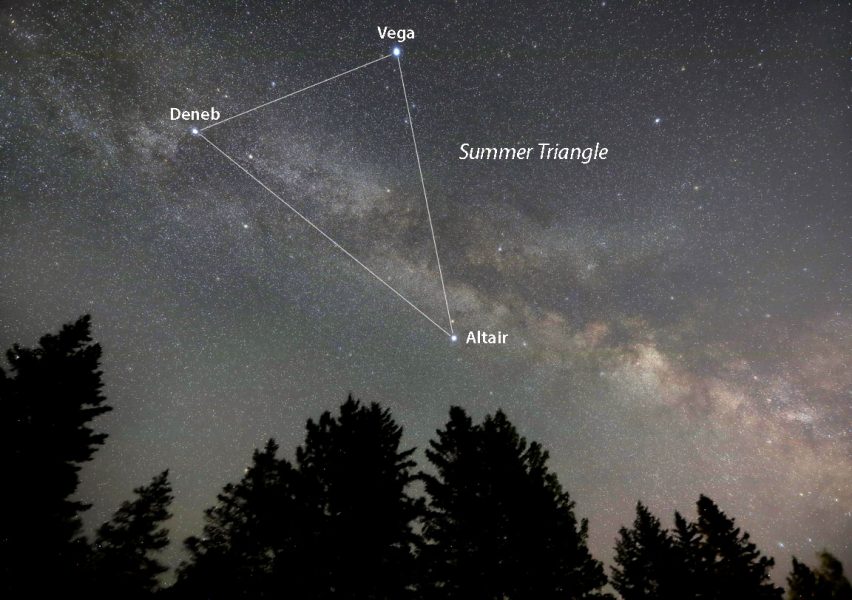
Bob King
From Vega, it's an easy 2° star-hop to one of my favorite stellar rubies, the carbon star T Lyrae. Carbon stars are evolved red giants with atmospheres rich in sooty carbon compounds that scatter away blue and green light and allow only the warmer colors to pass. A similar process turns the Sun red when seen through forest fire smoke. Like all carbon stars, its light is variable, in this case ranging from magnitude 7.5 to 9.2. When I observed it on June 4th, it glowed candy-apple red at 9.0.
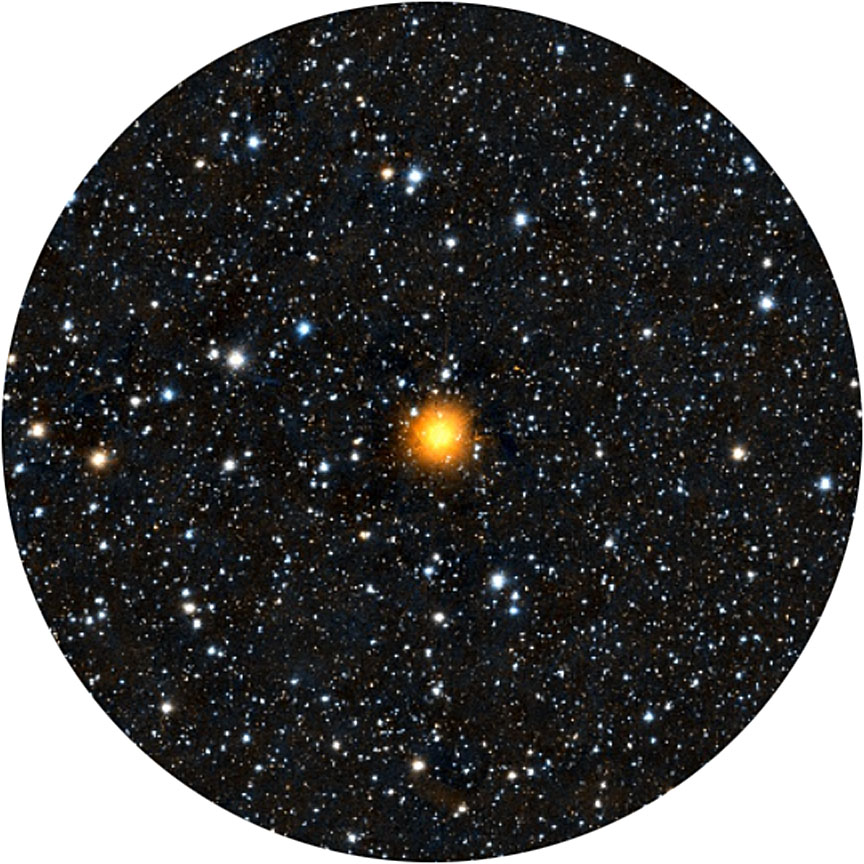
PanSTARRS DR1 / Aladin Sky Atlas
Extragalactic Side Trip
From T Lyrae, swing 1.8° east-southeast and you'll arrive at one of Lyra's several meek galaxies, the spiral NGC 6688. In my 15-inch scope I saw a 1.6′-wide, magnitude-12.6 foggy spot. Bumping the power up to 142× revealed an east-west elongated oval with a dense nuclear region and bright, near-stellar nucleus. Even if you decide to pass on the faint fuzzy, be sure to visit the charming double Σ2362, located just 0.5° to its southwest. The two components of magnitude 7.5 and 8.7 are separated by just 4.4″ in PA 187°. At 64× they make a splendid pair of tiny beads that almost touch — a beautiful sight in any telescope.
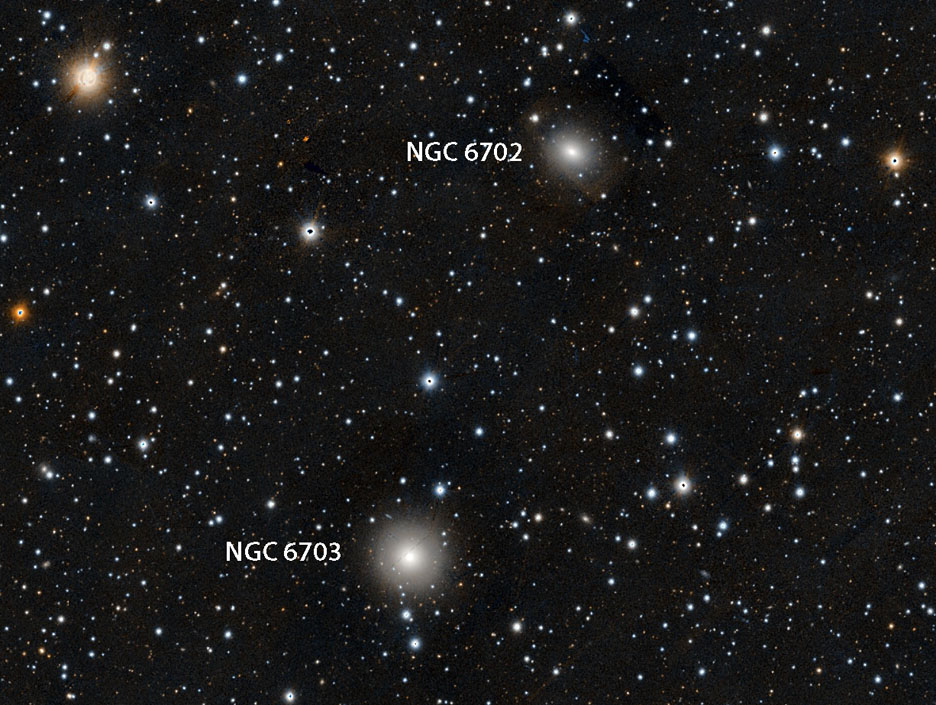
PanSTARRS DR1 / Aladin Sky Atlas
Before returning to the home galaxy let's explore an interesting pair of galaxies in northern Lyra 7° north-northeast of our lodestar, Vega — NGC 6703 (magnitude 11.3) and NGC 6702 (magnitude 12.2). NGC 6703's bright, dense core caught my eye even at low magnification. At 286× I discerned a bright, pinpoint nucleus and a faint, round halo bracketed by 12th-magnitude stars to the north and south. Fainter NGC 6702 subtly glowed 10′ to the northwest and in the same field of view. A very faint stellar nucleus dotted the galaxy's slightly brighter inner disk.
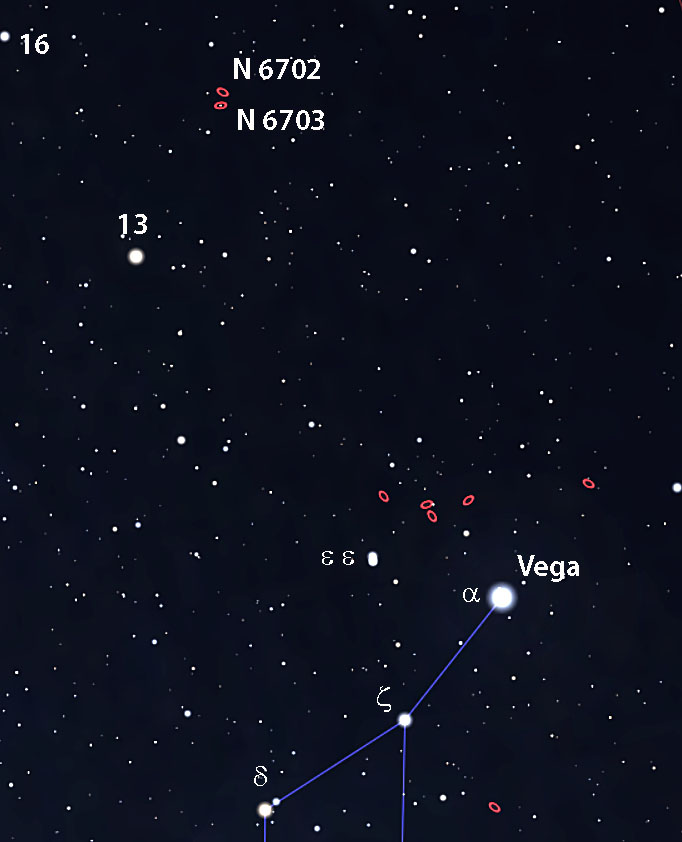
Stellarium
Double Double(s)
Lyra is home to the most famous multiple star in the sky, Epsilon1,2 (ε1,2) Lyrae, better known as the Double Double. The twin stars, magnitudes 4.6 and 4.7, sit 3.5′ apart, an easy split in a pair of binoculars but one of visual astronomy's most demanding naked-eye challenges. I recount how I finally pried them with a little help from my daughter in this earlier post.
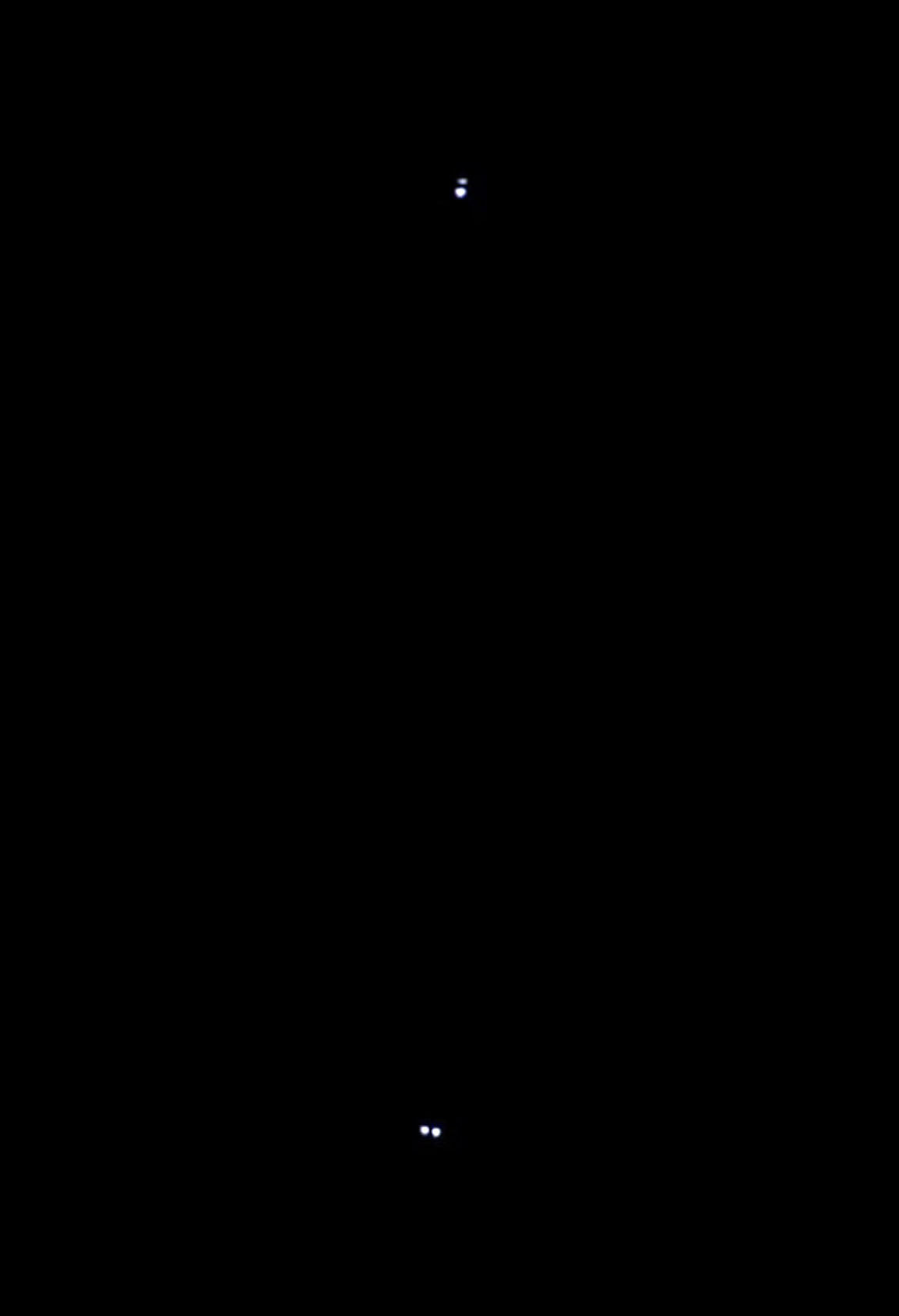
Michael Boyle
You could drive a truck between them in a telescope, but the charm here is that each star is double again. At 200× in a 4-inch or larger telescope, two elegant white pairs float in space nearly perpendicular to one another like a freeze-frame of tumbling astronauts. Epsilon1 (magnitudes 5.2 and 6.1) is the tighter, with a separation of 2.1″ (2019). The suns of Epsilon2 (magnitudes 5.3, 5.4) are a hair farther apart at 2.3″ (2019). Can you tell the difference?
The pairs are truly far from one another, about 10,000 times the Earth-Sun distance (called an astronomical unit or a.u.), and take at least 400,000 years to orbit about their center of gravity. The star separations within each pair are easier to picture. Epsilon1's components average 235 a.u. apart; those in Epsilon2 around 145 a.u. — similar to the distance from the Sun to the scattered disk, located beyond the Kuiper Belt.
While exploring Lyra I ran into a wonderful Double Double mimic. Σ2470 (magnitudes 7.0 and 8.4, separation 13.8″) and Σ2474 (magnitudes 6.8 and 7.9, separation 16″) are 10′ apart and located 2.8° northeast of Gamma (γ) Lyrae. These two easy duos have absolutely nothing to do with each other, and yet appeared convincingly connected. A delightful sight! And before I forget, be sure to look up Zeta (ζ) Lyrae (magnitudes 4.3 and 5.6, separation 44″). This bright, easy pair is suitable for any telescope and is a squeaky-tight sight in binoculars.
Clusters of All Kinds
Four star clusters populate the Lyre, two of which you can spot in binoculars. The easiest is the Delta Lyrae cluster, a 4th-magnitude sprinkle of 77 stars 40′ across centered on Delta (δ) Lyrae, an orange-colored M-type giant star. In 1959, American astronomer Charles Stephenson suspected that this coarse assemblage was in fact a true star cluster, the reason it's also designated Stephenson 1. Subsequent observations by others confirmed his suspicion.
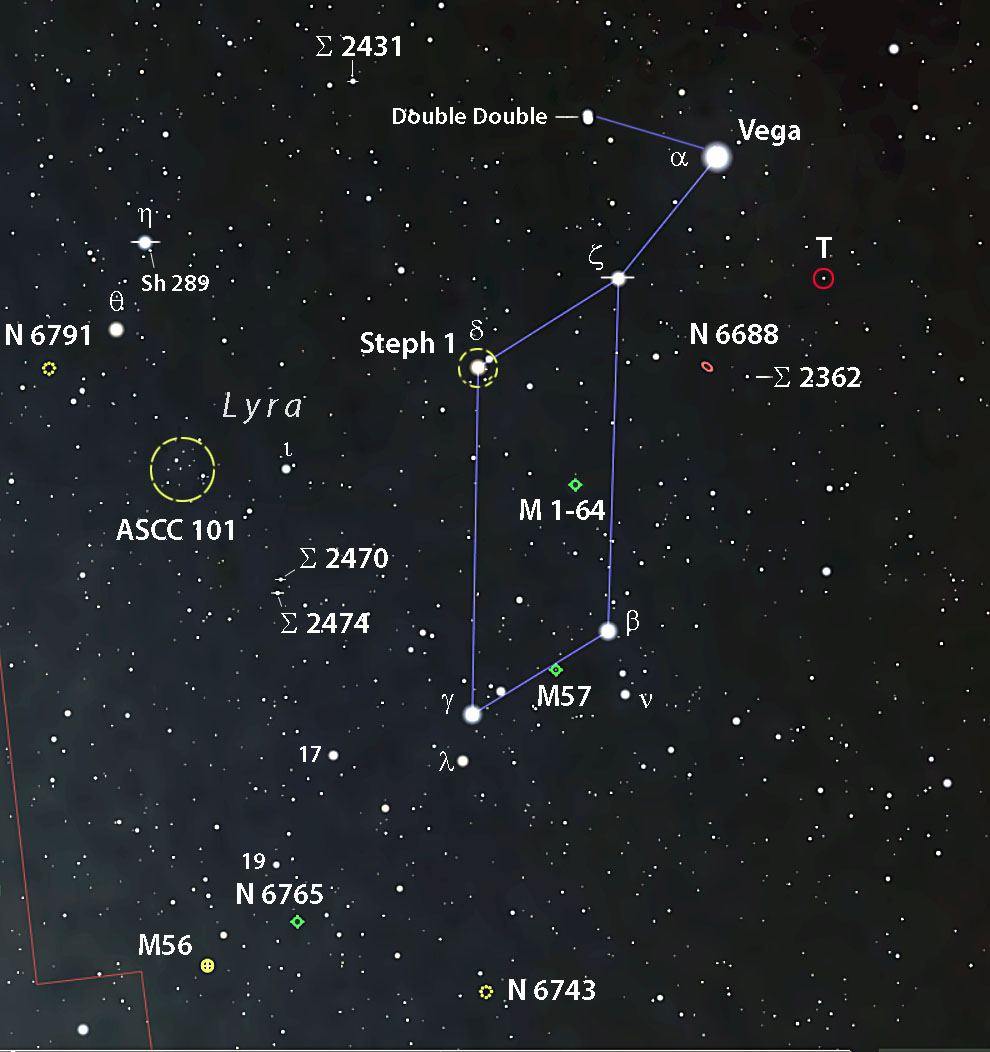
Stellarium with additions by the author
My 10×50 wide-fields pulled in half a dozen stars against a slightly hazy backdrop that hinted at more. Any telescope will fill out the cluster with several dozen additional members, three of which lie along a north-south line. Before leaving Delta Lyrae, slide your telescope 3.9° to the north for a gander at a really pretty, unequal double star, Σ2431 (magnitudes 6.2 and 9.6, separation 19″ in PA 236°).
If you slide your binoculars 4° east-southeast of Delta Lyrae you'll run into a splashy patch of stars 40′ across with a magnitude of 5.5 called ASCC 101 (the acronym derives from All-Sky Compiled Catalog). This bright group displays some nice star chains in a telescope. I see a flying goose figure of brighter members against a grainy, partially resolved backdrop of fainter stars. In my 15-inch at 64× the loose group almost fills the field. Brent Archinal and Steven Hynes in their book Star Clusters describe just a dozen stars here, but it seemed to me there were more.
Our next stop, NGC 6743, is a small, 8th-magnitude open cluster 3.5° south-southeast of Gamma (γ) Lyrae with some 35 members. The brightest in this loose, rather star-poor clutch shines at magnitude 8.2 near the cluster's center. The more compact region measures 4′ across, but additional stars, including two brighter members to the northwest, expand NGC 6743's diameter to 8′. I faintly discerned the group in my 10×50 finder, so most any telescope will bring it to light.
NGC 6791 is a breathtakingly rich but faint open cluster located near Lyra's eastern border. My neighbors might think I have a big telescope, but it's only adequate when it comes to NGC 6791. At first glance at 64×, I saw a granular glow 10′ wide concentrated toward the center. But with averted vision and higher magnification (142×), hundreds of faint stars emerge, many near the limit of vision. They come and go like pointillistic fireworks with the vagaries of averted vision.
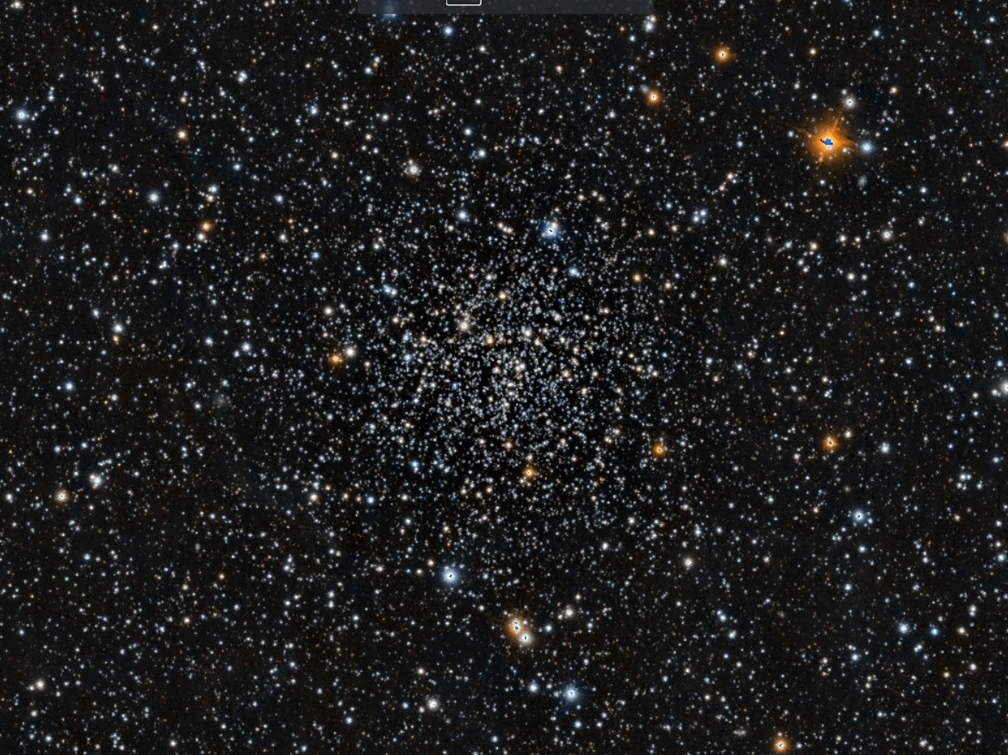
PanSTARRS DR1 / Aladin Sky Atlas
There are some 380 suns in NGC 6791, which is one of the oldest ( at around 8 billion years), most metal-rich and massive open clusters in the Milky Way. While NGC 6791's overall magnitude is 9.5, the brightest individual stars shine around magnitude 13. Going to a star party this summer? My advice? Seek out the biggest scope you can find and insist (nicely) to see this revelatory object.
Before leaving the area, slide 2° northwest of the cluster to enjoy a duo of attractive, bright double stars: Eta (η) Lyrae (magnitudes 4.4 and 8.6, separation 28.4″) and Sh 289 (magnitudes 8.0 and 8.7, separation 39.2″). The bright, easy pairs sit just 6′ apart and light up the field of view in a pretty way. "Sh" pairs the "S" from James South and "H" from John Herschel, the astronomers who first cataloged the double in 1823.
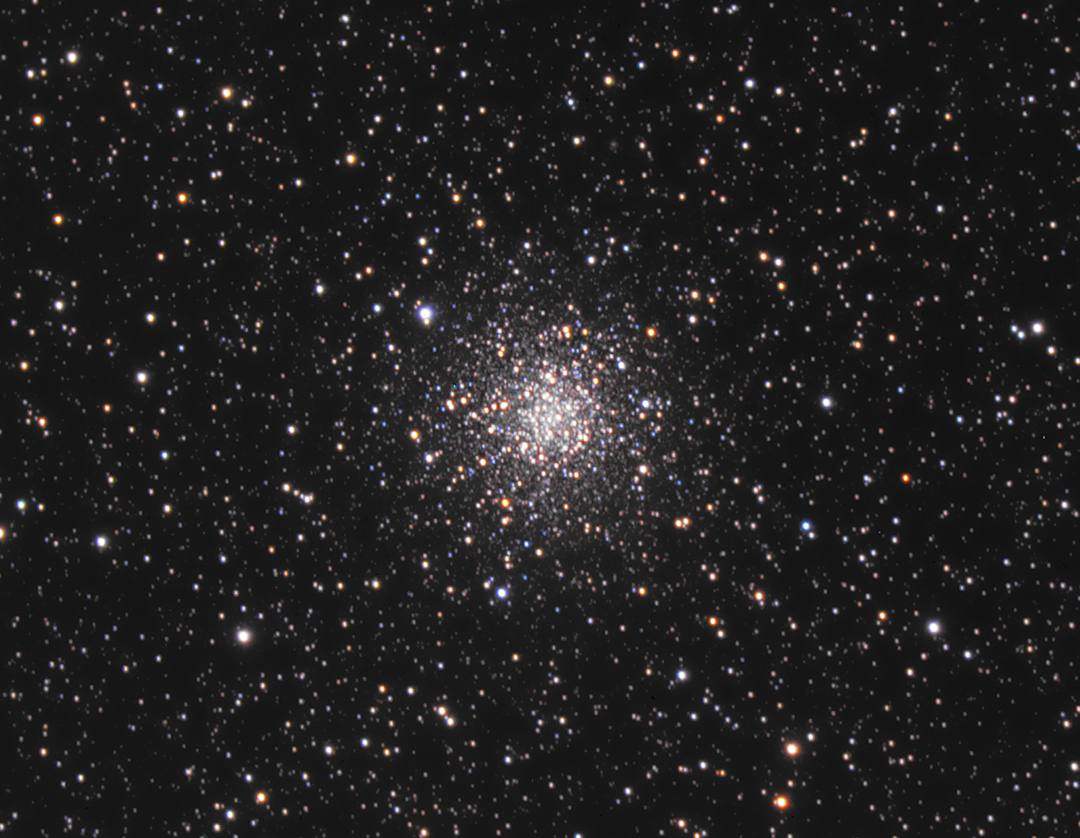
Hunter Wilson
We'll conclude our star cluster excursion at M56, Lyra's only globular. You'll find it in a lonesome corner of the constellation 3.8° northwest of the double star Albireo (also known as Beta Cygni). At magnitude 8.4 and 8.8′ in diameter, the cluster is easy to spot in a small instrument, but you'll need an 8-inch to resolve its halo and stars across the core. In the 15-inch, M56 appeared only weakly compressed with numerous stars visible right up to the center at 142×. The brightest shine at magnitude 13.
M56 is about 33,000 light-years away and 84 light-years across, nearly the same size as the distance between the solar system and the star Phecda in the Bowl of the Big Dipper. Take a minute to let that sink in. The cluster shares its motion with the giant globular Omega Centauri, which is thought to be the remnant nucleus of an entirely different galaxy that merged with the Milky Way long ago, making both globulars interlopers that were ultimately incorporated into our own.
Planetaries, Known and Lesser-known
The Ring Nebula (M57) will forever be one of the most inspiring telescopic sights. I got my first look as a 12-year-old and I reobserve it several times every year, the same way you return to an art museum for another look at that Van Gogh. Since I've written about the Ring before, I'll refer you to this earlier post for full details.
I reexamined it earlier this month and again spotted the elusive central star. If that's your quarry, you'll need at least a 10-inch scope, high magnification (I used in excess of 400×), averted vision and excellent seeing. Its tentative, come-and-go appearance reminds me of the momentary flash of a distant lighthouse beacon through dense fog.
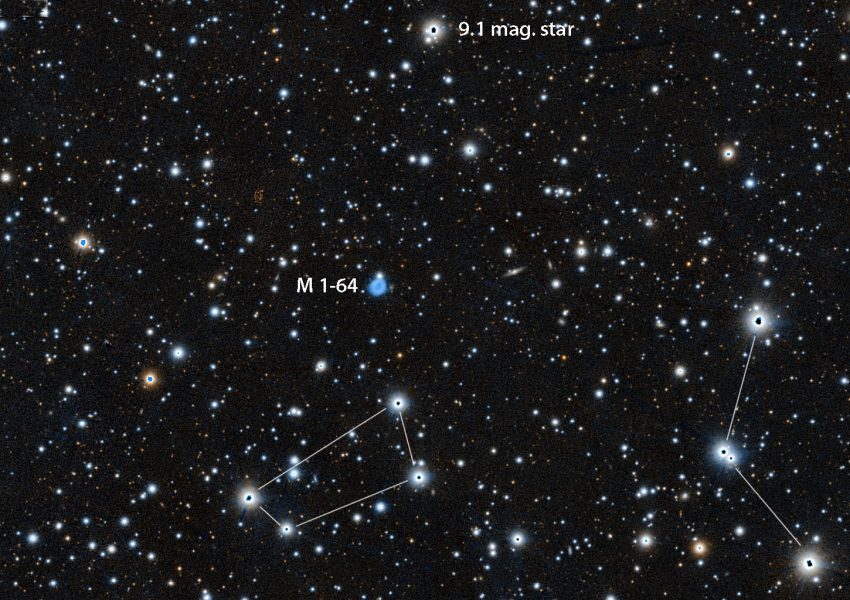
PanSTARRS DR1 / Aladin Star Atlas
M57's not the only jelly roll in Lyra. Minkowski 1-64 (M 1-64) looks like a tinier, fainter version of its famous cousin when viewed in larger amateur telescopes.
Located about 7′ south-southeast of a 9.1-magnitude star, I easily spotted this small but well-defined misty oval at low power by "blinking" the field with an O III filter. The filter increases the contrast of planetary nebulae by blocking unwanted light but allowing the light of ionized hydrogen and doubly ionized oxygen (emitted by these objects) to pass. M 1-64 emerged as a small 13.3-magnitude puff 28″ across and slightly elongated east-west.
Boosting the magnification to 429× and 571×, I could make out a faint star around magnitude 14.7 almost touching the nebula's northern border and hints of a darker center during better moments of seeing. An 8-inch should have no problem finding this one, although the ring-form and 16th-magnitude central star will prove elusive. Some observers report seeing the star using 14-inch telescopes, a feat beyond me.
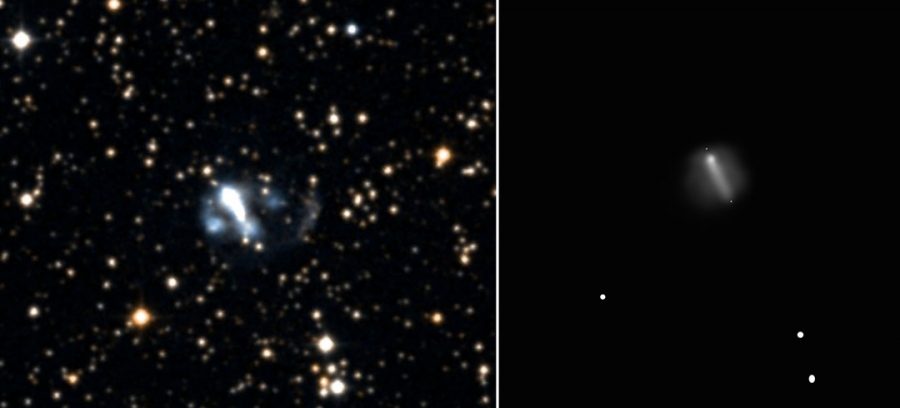
PanSTARRS DR1 (left), Bob King
I couldn't make sense at first of the next object, NGC 6765 (magnitude 12.9), which more closely resembled an edge-on galaxy than a planetary nebula. I saw a 40″-long streak elongated northeast-southwest, with a small, dense knot of brighter nebulosity at its northeastern tip. At magnifications of 357× and 429×, a nebulous shell cocooning the bar was visible with averted vision. I suspect its peculiar morphology may have to do with jets of material shot through the nebula.
I hope Lyra plucks your strings with its diversity. You or I may never learn to play a physical harp, but by the time you've seen all 20 of our featured objects I think you can rightly boast that you know your way around the celestial version.
 13
13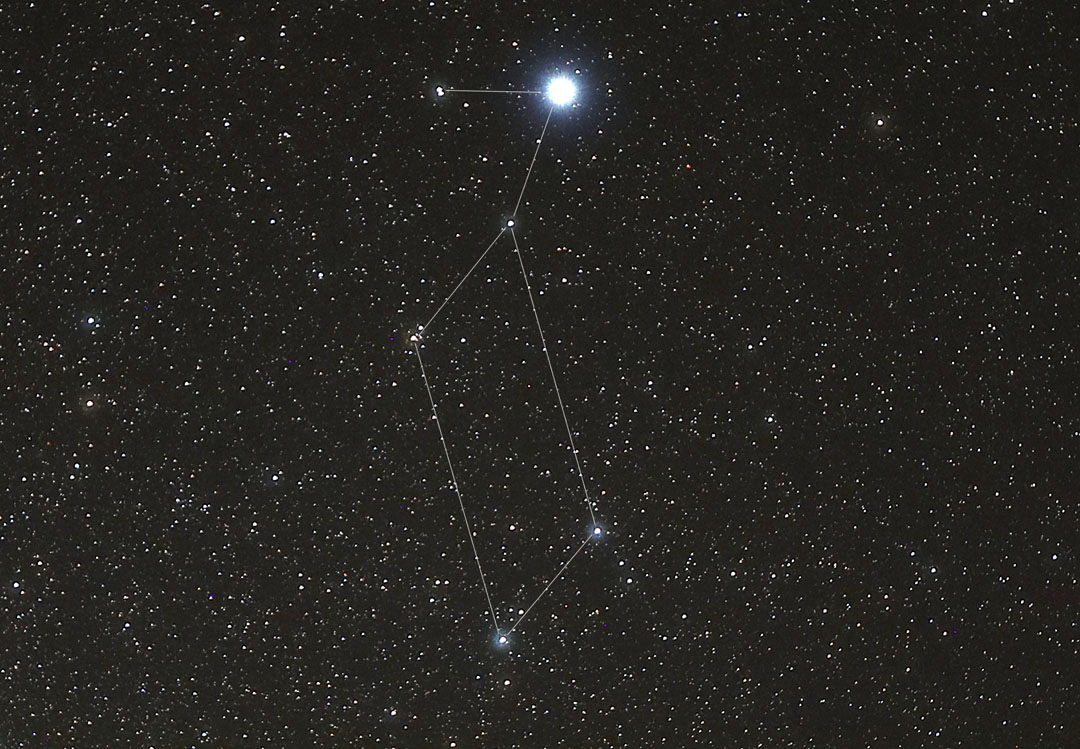










Comments
ErnieOstuno
June 17, 2021 at 5:27 pm
What a nice list of objects in one small patch of the sky. I thought I had seen everything in Lyra, but I'll have to go back and look for the open cluster ASCC 101, which doesn't appear on the Uranometria charts and the more common list of open clusters. Speaking of which, there is a recently discovered open cluster named Gaia 8 that is centered around Beta Lyra: https://www.aanda.org/articles/aa/full_html/2019/10/aa36595-19/aa36595-19.html#R10
I looked at online star atlases and it doesn't look like much. According to recent studies it is part of a larger stellar aggregation that includes Ste 1 and ASCC 101.
Decades ago, before the internet star maps were available, I collected all the Palomar Sky Survey charts covering Lyra, with the goal of observing every deep sky object in it since it was a relatively small constellation. I tried to see all the galaxies in the Zwicky catalogue and as many other faint, anonymous galaxies as I could with a 10 inch scope. Of all objects I've seen, the only items worth adding to the list you have here would be the planetary nebula PK 64+15.1 which is small but relatively bright and easy to find and NGC 6646 which is probably the brightest galaxy in the constellation. I think it's location is circled in the finder chart that shows NGC 6702, 6703, above and slightly to the right of Vega.
You must be logged in to post a comment.
Bob KingPost Author
June 17, 2021 at 7:06 pm
Hi Ernie,
Lyra does indeed offer a nice selection of objects in a manageable patch of sky. Very interesting about Gaia 8 around Beta Lyrae. I will definitely take a look to see if anything is visible there in my scope. About PK 64+15.1. I would have included it (and a few additional galaxies) but chose not to to keep the article length reasonable 😉
You must be logged in to post a comment.
ErnieOstuno
June 17, 2021 at 10:26 pm
Hey, wait a minute...after looking at your finder chart, I just realized that PK 64+15.1 = M1-64. So you did include it after all. I guess this list is pretty much complete for all the things really worth looking for in Lyra. 😀
One other thing...I never seriously tried to see the central star of the ring nebula because back in the day I was told it was impossible in an amateur telescope. You have provided us dedicated deep sky observers with the knowledge that it can be done. If I get a clear moonless night in the next few weeks I'lll give it a shot!
You must be logged in to post a comment.
Joe Adlhoch
June 18, 2021 at 4:15 pm
Ernie, I looked for the Ring's central star with my old 15" manual dob but could not see it. Now I have a 20" dob with tracking and it is reasonably easy to see about half of the nights I look for it. The key for me was really high power (fill the eyepiece fov with the Ring) and tracking. Someone with keener eyes could no doubt see it with a smaller scope. Good luck!
You must be logged in to post a comment.
Bob KingPost Author
June 19, 2021 at 12:21 pm
Hi Ernie,
No problem. By the way, the one I was thinking about but didn't include was PK 068+14.1 (Sp 4-1). It's mag. 13.7 but just 2" across and makes a good "blinker" with an OIII. Go ahead and add that one to your Lyra list.
You must be logged in to post a comment.
Bob KingPost Author
June 19, 2021 at 12:22 pm
Thanks, Rod. And happy rambling!
You must be logged in to post a comment.
Rod
June 18, 2021 at 2:01 pm
Bob KIng, very good report:) I really enjoy the double doubles using my 90-mm refractor at 200x. M57 looks excellent too in my 10-inch Newtonian. I need to spend more time in Lyra, especially after reading the report here 🙂 This week on Wednesday evening, I enjoyed Cygnus viewing with the 10-inch and 2-inch low power eyepiece with nearly 2-degree true FOV. Many faint stars and asterisms visible along with the lovely double Albireo. The waxing gibbous Moon is rising now. I need to *ramble* in Lyra 🙂
You must be logged in to post a comment.
Joe Adlhoch
June 18, 2021 at 4:19 pm
Bob King, my holy grail in Lyra is the small pinwheel galaxy IC 1296, very near the Ring Nebula. I've convinced myself on a couple occasions that I can just make out a fuzzy spot with my 20" dob, but most of the time I don't see it. I've photographed it, but visually it is really, really difficult.
You must be logged in to post a comment.
Bob KingPost Author
June 19, 2021 at 12:34 pm
Hi Joe,
I agree. It's an extremely challenging object but under very dark skies I've spotted it a couple times with my 15-inch at high magnification. If you'd like to add another Lyra challenge, try the planetary Abell 46 in the southeast corner of the constellation. It's 63"x60" and magnitude 13.8. I saw a dim but well-defined disk but only with OIII and UHC filters.
You must be logged in to post a comment.
Dave Mitsky
June 23, 2021 at 2:05 pm
I observed the planetary nebula NGC 6765 for the first time on the night of June 3, 2019 through a 20" f/3 Dob belonging to a fellow CAS member.
NGC 6765 (PK 62+9.1) is a 38 arc second, magnitude 12.9, irregular bipolar planetary nebula in Lyra at 19h 11m 08.2s, +30° 33' 02". This object appeared as a very faint streak and I rate it a 1.5 out of 5 on appearance but a 2.0 on novelty.
http://spider.seds.org/ngc/ngc.cgi?CatalogNumber=6765
You must be logged in to post a comment.
Bob KingPost Author
June 23, 2021 at 2:15 pm
Hi Dave,
Thank you for sharing your observation. Much appreciated! I can totally relate to bumping its rating higher for novelty.
You must be logged in to post a comment.
OwlEye
June 27, 2021 at 9:25 pm
Hi Bob. Got out last night just as it was getting dark and had a look at Stephenson 1 at 99 X with the 12.5-inch. Nice loose cluster engulfing Delta Lyrae. Then I moved over to T Lyrae. WOW!! Red is almost an understatement. You mentioning this was a carbon star reminded me of the first such object I ever stumbled across back in March of 1996. I had photographed the Great Comet of 1996 - C/1996 B2 (Hyakutake) - on the morning of the 26th, and after cropping a long panorama of the the 60 degree ion tail (see EPOD for January 18, 2010), spotted a very orange star near Cor Coroli in Canes Venatici, which turned out to be the semiregular variable, and carbon star, Y Canum Venaticorum. Now I want to have a look at it visually, and see just how it appears compared to T Lyrae. The moon was on the rise before I had a chance to search for any of the other goodies listed in your informative article.
You must be logged in to post a comment.
Bob KingPost Author
June 28, 2021 at 12:40 pm
Hi Doug,
Glad you got out for a look! Now that the Moon rises after midnight more opportunities will open up. It should be interesting to compare T Lyr and Y CVn.
Y CVn is currently 3 mags. brighter than T Lyr, so I'd guess Y will appear less red from brilliance alone. When you do make the comparison, by all means share your
observation here. Thanks!
You must be logged in to post a comment.
You must be logged in to post a comment.